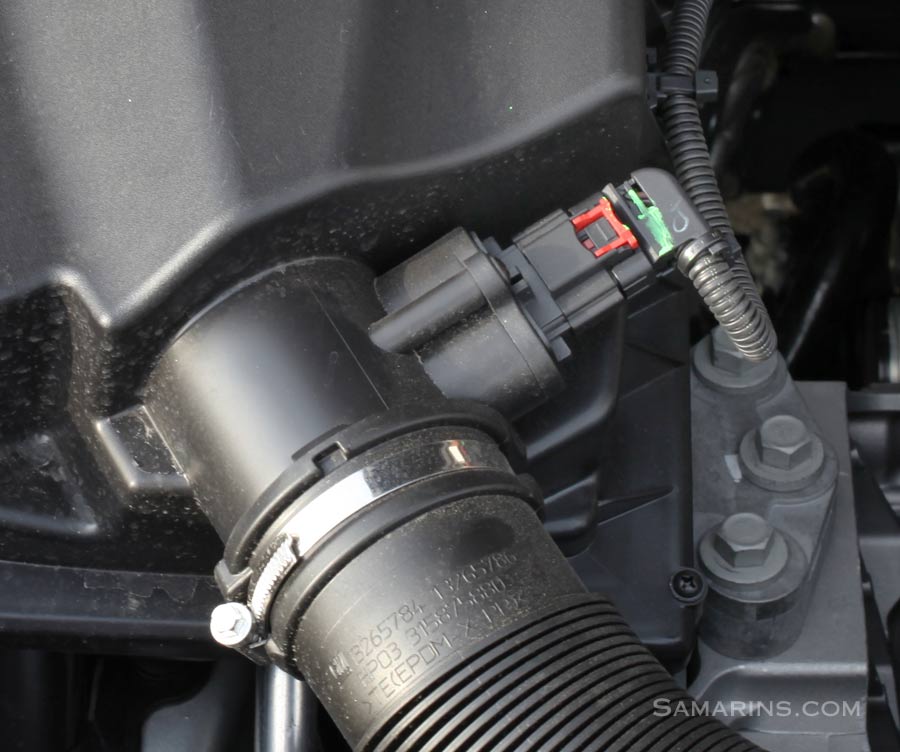Replacing a faulty mass air flow (MAF) sensor is a crucial repair that can improve your car’s performance and fuel efficiency. The MAF sensor plays a vital role in the engine control system by measuring the amount of air entering the engine. If the sensor fails, it can cause a variety of problems, ranging from reduced engine power to increased fuel consumption. While the cost of replacing a mass air flow sensor varies depending on the make and model of your vehicle, the average cost is between $200 and $600.

Image: www.samarins.com
Factors Affecting Replacement Cost
-
Labor Costs: The labor cost for replacing a MAF sensor can vary depending on the location and complexity of the repair. In most cases, the job can be completed in one to two hours, with labor costs averaging between $100 and $250.
-
Parts Cost: The cost of the MAF sensor itself depends on the make and model of your vehicle. Typically, replacement sensors cost between $100 and $400, with some high-performance or specialized sensors costing even more.
-
Type of Sensor: There are two types of MAF sensors: hot wire and hot film. Hot wire sensors are generally less expensive than hot film sensors, costing around $100-$200 compared to $200-$400 for hot film sensors.
-
Diagnostic Fees: If you are not certain that the MAF sensor is the cause of the problem, your mechanic may charge a diagnostic fee to pinpoint the issue. This fee can range from $50 to $150.
Recognizing Signs of a Faulty Mass Air Flow Sensor
To avoid costly repairs down the road, be aware of the telltale signs of a failing MAF sensor:
-
Check Engine Light: A lit check engine light can indicate a MAF sensor problem, although it can also signal other issues.
-
Engine Stalling: A faulty MAF sensor can cause the engine to stall, especially when idling or at low speeds.
-
Decreased Fuel Economy: If your car is suddenly using more fuel than usual, a faulty MAF sensor may be the culprit.
-
Increased Emissions: A malfunctioning MAF sensor can increase the vehicle’s emissions, leading to failed emissions tests.
-
Power Loss: A failing MAF sensor can result in reduced engine power and acceleration, making it harder to climb hills or tow heavy loads.
-
Rough Idle: An irregular or rough idle, particularly when the engine is cold, can be a sign of a faulty MAF sensor.
DIY vs. Professional Repair
Replacing a MAF sensor can be a DIY project for skilled mechanics with the proper tools and knowledge. However, it is generally recommended to entrust this repair to a qualified mechanic, as improper installation can lead to further problems.
If you decide to tackle the repair yourself, follow these steps:
-
Gather the necessary tools: a socket wrench set, a screwdriver, and a replacement MAF sensor.
-
Locate the MAF sensor: It is usually found in the air intake tube, between the air filter and the throttle body.
-
Disconnect the electrical connector: Unplug the sensor’s electrical connector.
-
Remove the old sensor: Use a socket wrench to loosen the bolts holding the sensor in place and remove it from the air intake tube.
-
Install the new sensor: Position the new sensor in the air intake tube and tighten the bolts.
-
Reconnect the electrical connector: Plug the sensor’s electrical connector back into the wiring harness.
-
Reset the engine: After replacing the MAF sensor, it is recommended to reset the engine by disconnecting the negative battery terminal for a few minutes and then reconnecting it. This will allow the engine to relearn the sensor’s signal.

Image: www.youtube.com
How Much To Replace A Mass Air Flow Sensor
Conclusion
Replacing a MAF sensor is an essential repair that can improve your car’s performance and fuel efficiency. While the cost of replacement can vary, the average range falls between $200 and $600. To avoid costly repairs in the future, be attentive to the signs of a failing MAF sensor, such as decreased fuel economy or engine power loss. If you are unsure about your ability to replace the sensor yourself, entrust the task to a qualified mechanic to ensure proper installation.